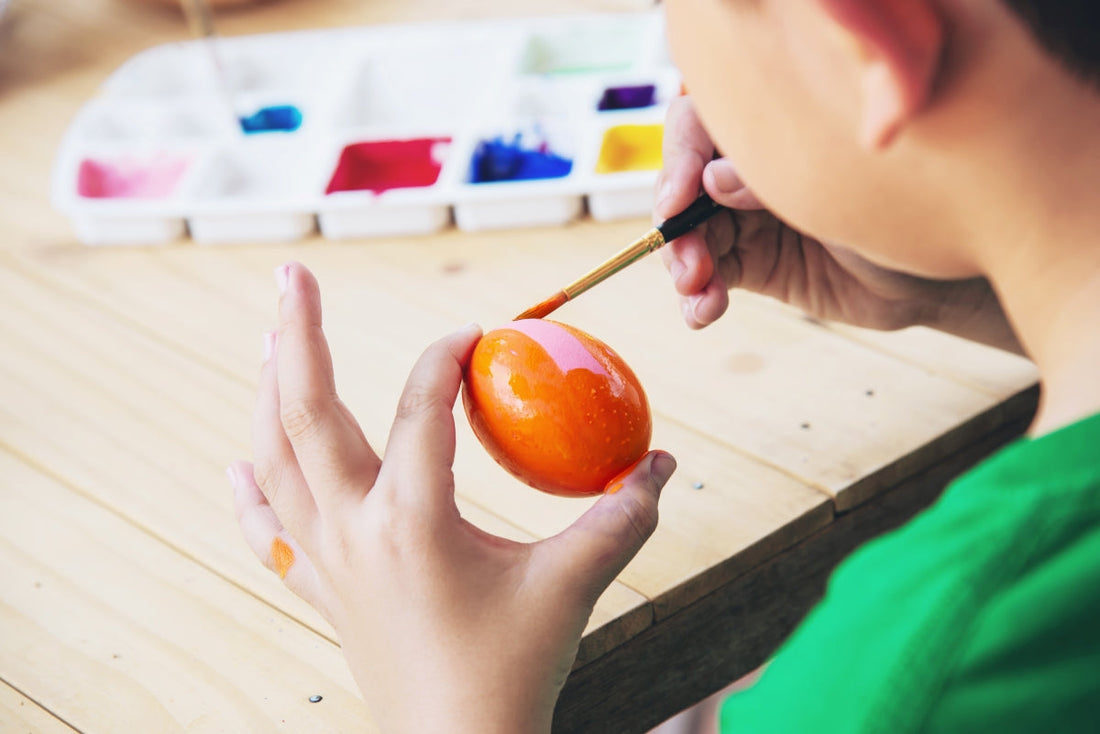
How Paint by Numbers Helps Develop Fine Motor Skills in Children
Aktie
Paint by numbers has long been regarded as a fun and relaxing pastime, but it’s also a powerful tool for child development—especially when it comes to improving fine motor skills. As children grow, the coordination between their hands, fingers, and eyes becomes increasingly important for tasks such as writing, using utensils, and tying shoes. Paint by numbers offers an enjoyable and engaging way to support this growth through creativity and play.
In this article, we’ll explore what fine motor skills are, why they’re crucial for development, and how paint by numbers helps children strengthen these skills while having fun.
What Are Fine Motor Skills?
Fine motor skills involve the use of small muscles in the hands and fingers that enable precise movements. These skills are essential for a wide range of everyday activities, including:
- Holding a pencil or crayon
- Buttoning a shirt or zipping a coat
- Using scissors, utensils, or a toothbrush
- Typing, drawing, and crafting
- Performing small tasks that require dexterity and control
Developing fine motor skills begins in early childhood and continues to evolve through practice and repetition. Activities that require hand-eye coordination and precise finger movement—like painting—play a key role in strengthening these abilities.

How Paint by Numbers Supports Fine Motor Skill Development
Paint by numbers offers the perfect balance of structure and freedom to help kids develop fine motor skills in a way that’s creative and enjoyable. Here’s how:
1. Controlled Brush Strokes:
Each section of a paint by numbers canvas is defined by small, numbered areas. Children must guide the brush within the lines, promoting steady hand movement and control. Over time, this improves their ability to manipulate tools with accuracy.
2. Hand-Eye Coordination:
Matching the correct color with the corresponding number encourages kids to scan, identify, and respond to visual cues. This strengthens the connection between what they see and how their hands react—critical for writing and other fine motor tasks.
3. Precision and Dexterity:
Working in smaller areas challenges children to focus and maneuver the brush with care. These repetitive, refined motions increase dexterity and finger strength.
4. Bilateral Coordination:
Children often use one hand to hold the canvas or guide their work while the other hand paints. This two-handed coordination is important for developing balance and control between both sides of the body.
Age-Appropriate Approaches to Painting
Paint by numbers can be adapted for different age groups to ensure the right level of challenge and support:
For preschoolers (ages 3–5):
- Choose larger sections and fewer color variations
- Use thicker brushes that are easier to grip
- Focus on bright, engaging designs like animals or simple shapes
For early elementary kids (ages 6–8):
- Introduce more complex canvases with smaller sections
- Encourage more independence in paint selection and application
For older children (ages 9+):
- Provide detailed kits with intricate designs to further refine precision
- Let them take the lead on setup, color mixing (if needed), and cleanup
The flexibility of paint by numbers means it can grow with your child, offering new levels of challenge as their skills improve.

Beyond Motor Skills: Additional Benefits for Children
In addition to fine motor development, paint by numbers supports other areas of growth:
- Patience and focus: Staying within the lines and completing a painting takes concentration and persistence.
- Memory and recognition: Kids must recall and match numbers and colors across the canvas.
- Creativity and expression: Even with a structured design, kids often experiment with colors and techniques.
- Self-esteem: Completing a project gives children a sense of accomplishment and pride in their abilities.
- Visual-spatial awareness: Understanding how parts of the image fit into the whole improves cognitive mapping and layout thinking.
These combined benefits make paint by numbers a holistic developmental activity, nurturing both the body and mind.
Tips for Supporting Your Child's Painting Experience
To make the most of paint by numbers for fine motor development, consider the following tips:
- Create a quiet, comfortable workspace with good lighting.
- Offer encouragement rather than correction. Praise their effort and attention to detail.
- Let them take breaks if they seem frustrated or fatigued.
- Use tools that fit their hand size, like ergonomic brushes or painting grips.
- Celebrate milestones, whether it’s finishing a color or completing the whole painting.
- Display their artwork on the wall or refrigerator to reinforce their achievement.
Using Paint by Numbers in Therapy and Education
Because of its developmental benefits, paint by numbers is often used by occupational therapists and educators to help children with motor delays, coordination challenges, or sensory processing issues.
In therapeutic settings, these kits offer a calming, low-pressure way to engage children in activities that build motor function. The structured, step-by-step nature of paint by numbers also helps kids with attention disorders stay engaged in a task from start to finish.
Educators incorporate paint by numbers into classrooms and art programs as part of creative learning. When paired with lessons in science (like painting animals), geography (landscapes), or history (famous landmarks), the kits can be a cross-disciplinary teaching tool.

Choosing the Right Kit
When selecting a paint by numbers kit for developmental support, keep in mind:
- Canvas size and section detail: Younger kids do better with fewer, larger sections.
- Paint quality: Non-toxic acrylics are safest and easiest to clean.
- Theme interest: Choose a subject your child loves—dinosaurs, unicorns, pets, or outer space—to boost engagement.
- Customization options: Some sites allow you to turn your child’s drawing or photo into a personalized paint by numbers kit.
Brands like PaintYourNumberss.com offer collections specifically designed for kids, making it easier to find age-appropriate, educational kits that suit your child’s interests and skill level.
Final Thoughts
Paint by numbers isn’t just a relaxing hobby—it’s a hands-on developmental tool that helps children build essential fine motor skills while having fun. By encouraging careful movement, coordination, and visual attention, painting within the lines can set the stage for success in school, at home, and beyond.
Whether your child is picking up a brush for the first time or adding a new kit to their collection, each paint by numbers experience is helping them grow. With the right support and a dash of creativity, you can turn every painting session into a colorful learning adventure.
